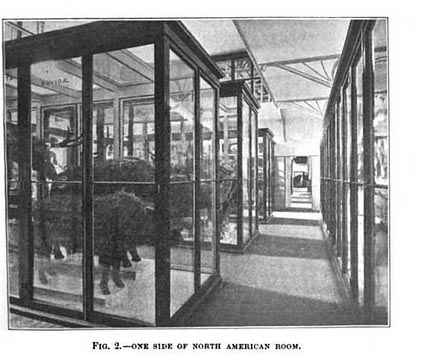Interpretation of a natural history museum
The primary purpose of this field trip is to consider in what ways you can interpret representations or images of nature (=the organisms, the processes of life, and the order in those organisms and processes) in terms of favored ideas about social arrangements. However, in order to make sound interpretations, it is necessary first to look more closely than we often do when walking through a museum [*]. To that end, it might help to take a walk through to answer the question:In what ways has the museum changed--or not changed--since Wallace described the museum as evidence that Americans were “free from those old-world establishments and customs whose obstructiveness so often paralyses the efforts of the educational reformer, and their originality of thought and action has thus freer scope; they are not afraid of experiments, and do not hastily condemn a thing because it is new; while, in all they undertake they are determined to have the best or the biggest attainable”?
Here is a picture from the 1900 reprint of Wallace's 1887 article :

Then take a look at specific exhibits, new and old:
- How are mammals grouped?
- What is the significance--or not-- of displaying in the same case animals from different classes (e.g., birds and mammals)?
- What is shown when skeletons are next to stuffed animals?
- How is fish evolution presented and how does it relate to the great chain of being or Haeckel's evolutionary trees?
- What is different when the animals are placed in the context of a forest, ecosystem, or the whole biosphere (as against on their own)?
- What language or metaphors are used in the modern exhibits (e.g., "productive" habitats)?
- What are people talking about -- children as well as adults -- as they view the exhibits?
- What are you thinking as you take in or pass by specific exhibits?
- What other questions might you add to guide future students as they visit and interpret a natural history museum?
[*] If you are visiting a different museum, aim to divide the visit into two phases:
1) Getting a sense of the contents of the museum--what is old and what is new and how do they differ? Indeed, how does your museum differ from the one described by Wallace in 1887?
2) Examining specific exhibits to make sense, if you can, of the arrangement and the language used. Posing questions is as important as coming up with interpretations.
